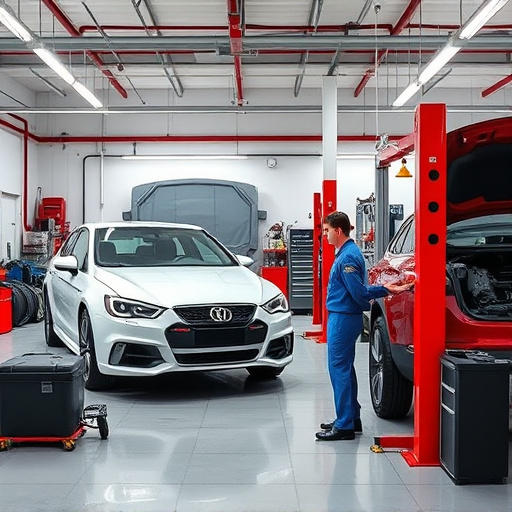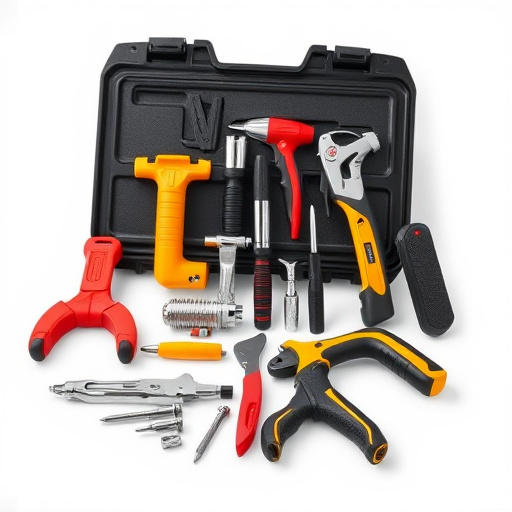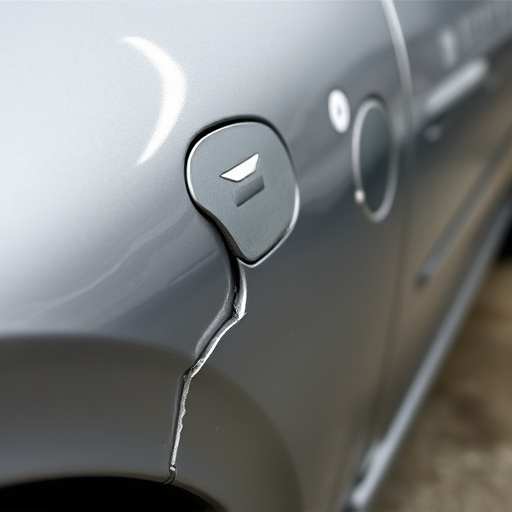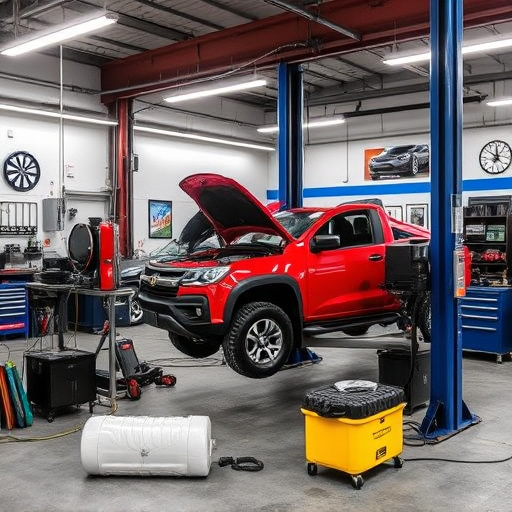Understanding Mercedes Seat Heating Repair Costs and Alternatives

Mercedes seat heating systems can fail due to wiring damage or control module issues. Repairs range…….
In the realm of automotive comfort and technology, Mercedes-Benz has long been synonymous with innovation and luxury. Among its numerous advanced features, seat heating is a beloved convenience that enhances passenger experience, especially in colder climates. However, like all mechanical systems, these heated seats can wear out over time, leading to issues that require skilled repair. This article delves into the intricacies of Mercedes seat heating repair, exploring its definition, global impact, technological advancements, and future prospects. By understanding this specialized field, car enthusiasts, mechanics, and industry stakeholders can make informed decisions regarding maintenance, innovation, and regulatory compliance.
Definition: Mercedes seat heating repair involves the diagnosis, troubleshooting, and replacement or restoration of electric heating elements and associated components within a vehicle’s seats. This process ensures that the seats provide the desired level of warmth to passenger areas, typically through a network of heated wires or pads embedded in the upholstery fabric.
Core Components: The primary components of a Mercedes seat heating system include:
Heating Element: Usually composed of resistive wires or flexible heaters, these elements are strategically placed within the seat cushion and backrest to generate heat.
Control Unit: This electronic component manages the flow of current to the heating element, ensuring precise temperature control. It communicates with various sensors to maintain optimal warmth.
Sensor: Sensors monitor the seat’s temperature and user preferences, feeding data to the control unit to regulate heat output accordingly.
Wiring Harness: The harness connects the control unit to the heating elements, enabling power transmission and signal communication.
Historical Context: Mercedes-Benz introduced heated seats as a standard feature in certain models during the 1980s, revolutionizing in-car comfort. Over the years, the technology evolved with advancements in materials science, allowing for more efficient, compact, and customizable heating systems. Today, these heated seats are a desirable option across various vehicle segments, from luxury sedans to mass-market cars.
Significance: Seat heating repair is critical for several reasons:
Passenger Comfort: Heated seats provide relief from cold weather, enhancing overall passenger comfort and satisfaction.
Safety: In colder regions, warm seats can help prevent drivers and passengers from experiencing numb or frozen body parts, improving alertness and response times.
Vehicle Retention Value: Well-maintained heated seats contribute to a vehicle’s resale value, as they are considered a desirable feature by many buyers.
Mercedes seat heating repair has a significant global reach, with varying trends and preferences across regions:
| Region | Trends | Demanding Markets |
|---|---|---|
| North America | Advanced integration of smartphone connectivity for personalized temperature settings. | United States, Canada |
| Europe | Focus on energy-efficient heating systems and eco-friendly materials. | Germany, United Kingdom |
| Asia Pacific | Customization options to cater to diverse cultural preferences. | Japan, South Korea |
| Latin America | Increasing adoption due to changing climate and growing luxury car market. | Brazil, Mexico |
These regional variations reflect the diverse needs and priorities of automotive consumers worldwide. As global markets become more interconnected, trends often diffuse across regions, fostering a standardized approach to seat heating repair while allowing for local adaptations.
The global automotive seating market, which includes heated seat systems as a premium feature, experienced steady growth between 2019 and 2021, with an estimated value of $38.7 billion in 2020. This growth is attributed to rising disposable incomes, especially in emerging markets, and the increasing popularity of electric vehicles (EVs) that often come equipped with advanced heating and cooling systems.
Automotive manufacturers invest heavily in research and development (R&D) for seat heating technology, aiming to create more efficient, sustainable, and customizable solutions. For instance, some companies are exploring the use of smart fabrics that incorporate heating elements, offering improved comfort and weight savings. These innovations drive up demand for specialized repair services as they introduce new complexities into the repair process.
Mercedes seat heating repair contributes to economic systems in several ways:
Job Creation: It supports a skilled workforce, including automotive technicians, engineers, and specialists in electric vehicle (EV) technology.
Industry Growth: The demand for heated seat repairs drives the expansion of automotive aftermarket services and parts suppliers.
Resale Value: Well-maintained vehicles with functional heated seats tend to retain their value better, benefiting both owners and dealers.
One of the most significant technological advancements in Mercedes seat heating repair is the integration of smart heating systems. These systems use sensors and microcontrollers to monitor and adjust temperature settings based on real-time occupancy and environmental conditions. For example, a vehicle might automatically turn off seat heating when the door is opened or detect when a passenger enters the car and respond by warming the seats accordingly.
Energy efficiency has been a driving force behind technological advancements. Modern heated seat systems employ more energy-efficient components, such as low-wattage heating elements and advanced insulation materials, to reduce power consumption without compromising performance. This trend aligns with broader industry efforts to make vehicles more environmentally friendly.
The introduction of wireless communication technologies allows for remote troubleshooting and software updates, streamlining the repair process. Mechanics can access real-time diagnostics and receive guidance from centralized systems, enabling faster and more accurate repairs. Additionally, wireless updates ensure that control units remain up-to-date with the latest firmware versions.
Automotive safety regulations play a pivotal role in shaping the development and repair of heated seats. Organizations like the National Highway Traffic Safety Administration (NHTSA) in the United States and Euro NCAP in Europe set standards for vehicle safety, including requirements for electrical systems to prevent fire hazards and ensure proper functionality under various conditions.
In response to environmental concerns, regulatory bodies have implemented guidelines for the disposal and recycling of automotive components, including heated seat systems. These regulations encourage manufacturers to design products with sustainability in mind, ensuring that repair and replacement processes adhere to eco-friendly practices.
Manufacturers of heated seat systems must maintain product liability insurance to cover potential issues arising from defects or negligence. This ensures that consumers are protected and encourages manufacturers to uphold high quality and safety standards.
Despite the advancements in Mercedes seat heating repair, several challenges and criticisms exist:
Complex Repairs: Modern heated seat systems are increasingly complex, requiring specialized knowledge and tools for effective repair. This complexity can lead to higher labor costs and longer repair times.
Cost of Replacement Parts: Heated seat components, especially those from luxury vehicle manufacturers, can be expensive, making repairs a significant financial burden for some owners.
Environmental Concerns: The disposal of heated seat systems must adhere to stringent environmental regulations, adding complexity to the recycling process and potentially increasing costs.
Proposed Solutions:
Training Programs: Automotive training institutions and manufacturers should collaborate to develop comprehensive courses that equip technicians with the necessary skills to handle complex repairs efficiently.
Standardized Parts: Encouraging the use of standardized components can reduce costs and simplify the repair process, making it more accessible to independent garages.
Sustainable Recycling: Investing in research for more efficient recycling methods and promoting circular economy practices can help minimize environmental impacts associated with heated seat disposal.
Challenge: A leading automotive manufacturer faced the challenge of repairing heated seats in their popular compact car model, which had experienced issues with control unit malfunction and inconsistent heating performance.
Solution: They implemented a streamlined repair process by:
Standardizing Components: Using interchangeable control units and sensors across various models simplified inventory management and reduced repair times.
Remote Diagnostics: Employing wireless communication allowed for remote troubleshooting, enabling technicians to access real-time data and receive guidance from a centralized support team.
Training Program: Developing an online training module that covered the entire repair process ensured that all service centers could offer efficient repairs, regardless of their location.
Result: The new approach led to a 25% reduction in heated seat repair times, improved customer satisfaction, and significant cost savings for both the manufacturer and consumers.
Scenario: A luxury car dealership encountered difficulties in repairing and restoring heated seats in their high-end models, which featured custom-sewn upholstery and advanced temperature zones.
Approach: The dealership partnered with a specialized repair service that:
Customized Repair Techniques: Developed tailored repair methods for each unique seat design, ensuring the preservation of the vehicle’s original aesthetic.
Sustainable Materials: Utilized eco-friendly materials for repairs, adhering to the manufacturer’s sustainability goals and maintaining the vehicle’s green certification.
Customer Engagement: Provided customers with real-time updates on repair progress through a dedicated mobile app, enhancing transparency and customer experience.
Outcome: The collaboration resulted in successfully restored heated seats, retaining the vehicles’ luxury appeal while meeting the dealership’s environmental standards and customer expectations.
The future of Mercedes seat heating repair is promising, with several emerging trends and growth areas:
Integration of Smart Technologies: As vehicle connectivity continues to grow, heated seats will likely become part of a larger smart interior ecosystem, allowing for remote control and personalized settings through smartphone apps.
Advanced Material Science: The development of new materials, such as flexible semiconductors and stretchable heaters, could lead to more compact, efficient, and customizable heating systems.
Electric Vehicle (EV) Market Growth: With the increasing adoption of EVs, there will be a growing demand for advanced heating and cooling systems that can contribute to improved passenger comfort in cold climates without compromising range.
Sustainability Focus: Environmental concerns will continue to shape industry trends, driving the development of more eco-friendly heated seat systems and repair practices.
Mercedes seat heating repair is a specialized yet critical aspect of automotive maintenance and technology. As global demand for comfortable and efficient vehicles continues to rise, this field will play an increasingly important role in ensuring passenger satisfaction and safety. Through technological advancements, streamlined repair processes, and a focus on sustainability, the industry can address current challenges and meet future demands. By understanding and investing in this sector, automotive manufacturers, technicians, and stakeholders can contribute to a more comfortable and environmentally conscious driving experience.
Q: How often should I get my Mercedes heated seats repaired?
A: The frequency of repair depends on various factors, including vehicle age, usage patterns, and environmental conditions. Regular maintenance checks can help prevent major issues, but it’s essential to address any warning signs or performance problems promptly. Most manufacturers recommend periodic inspections as part of routine vehicle servicing.
Q: Can I replace individual heated seat components myself?
A: While some basic repairs, such as fixing loose connections or replacing fuse links, may be feasible for DIY enthusiasts, most advanced heated seat systems require specialized knowledge and tools. It’s generally recommended to seek professional assistance for comprehensive repairs to ensure proper functionality and safety.
Q: Are there any environmental concerns specific to heated seat systems?
A: Yes, several environmental considerations come into play with heated seat systems. The primary concern is the disposal of electrical components, which must be handled according to strict regulations to prevent hazardous material releases and promote recycling or proper e-waste management. Additionally, energy efficiency is a crucial factor, as these systems contribute to overall vehicle power consumption.
Q: How can I ensure my heated seats retain their effectiveness over time?
A: To maintain the performance of your heated seats:
Regular Cleaning: Keep the seats clean and free from debris to prevent blockages in heating elements.
Moderate Use: Avoid excessive heating for extended periods, as it can degrade components over time.
Periodic Inspection: Have a qualified technician inspect the system periodically to identify and address potential issues before they become major repairs.
Q: Can heated seats be customized to different temperature zones?
A: Yes, many modern Mercedes vehicles offer customizable temperature zones for front and rear passengers. This feature allows each occupant to set their preferred temperature, enhancing overall comfort and addressing individual preferences.

Mercedes seat heating systems can fail due to wiring damage or control module issues. Repairs range…….

Mercedes seat heating systems can develop issues like uneven heating and system failure. Early ident…….

Mercedes seat heating issues can be addressed through regular maintenance and early troubleshooting……..

Mercedes seat heating systems require prompt attention for minor issues to prevent costly repairs. T…….

Mercedes seat heating repair offers long-lasting comfort, lasting years with proper care. Regular cl…….

Common sensor issues like faulty switches and debris-caused malfunctions plague Mercedes seat heatin…….

Mercedes heated seats are sensitive to weather extremes, affecting performance and longevity. Regula…….

Diagnose and replace a blown fuse, using tools like a multimeter, for Mercedes seat heating repair……..

Mercedes seat heating repair involves diagnosing issues ranging from simple fuse replacement to comp…….